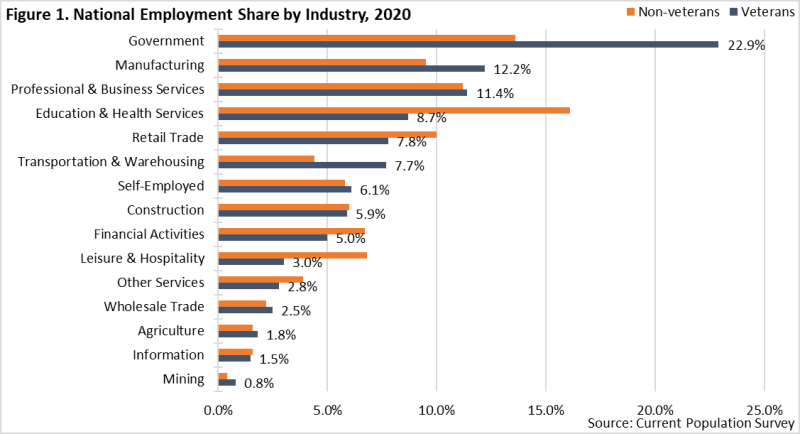 The Minneapolis-St. Paul metropolitan area is a national leader in finance, advanced manufacturing, agriculture and retailing.
The Minneapolis-St. Paul metropolitan area is a national leader in finance, advanced manufacturing, agriculture and retailing.
Medical devices, electronics and processed foods are strong suits recognized globally.
Want the freshest data delivered by email? Subscribe to our regional newsletters.
11/8/2021 9:00:00 AM
Tim O'Neill
The Bureau of Labor Statistics (BLS) recently released national level data from the Current Population Survey (CPS) revealing the impact the COVID-19 recession had on veterans in the labor market. Highlights from the annual 2020 data include:
As the data from the CPS reveals, the unemployment rate for veterans was higher in Minnesota during annual 2020 (8.5%) than it was at the national level (6.5%). The data also reveals that the unemployment rate for veterans in Minnesota was higher than it was for nonveterans (5.6%) in the state in 2020.
Figure 1 highlights the industries that veterans and nonveterans worked in during 2020. This also reveals the share of veterans and nonveterans who were self-employed during the year. As Figure 1 shows, over one-in-five veterans (22.9%) worked in government. Not surprisingly, this is a much higher share than the 13.6% of nonveterans who worked in government at that time. Other industries that employed significantly higher shares of the respective veteran workforce to the nonveteran workforce included Manufacturing and Transportation & Warehousing. On the other hand, industries that employed significantly lower shares of veterans to their nonveteran counterparts included Education & Health Services, Retail Trade, Financial Activities, Leisure & Hospitality, and Other Services (Figure 1).

If you're a veteran in Minnesota looking to find work in Government, Manufacturing, Transportation & Warehousing, or any other industry sector, the Department of Employment and Economic Development (DEED) has the resources to help with your career search on the CareerForce Veterans Employment resources page. Veterans should also keep an eye out for career fairs and hiring events on the CareerForce website.
Contact Tim O'Neill, Labor Market Analyst.